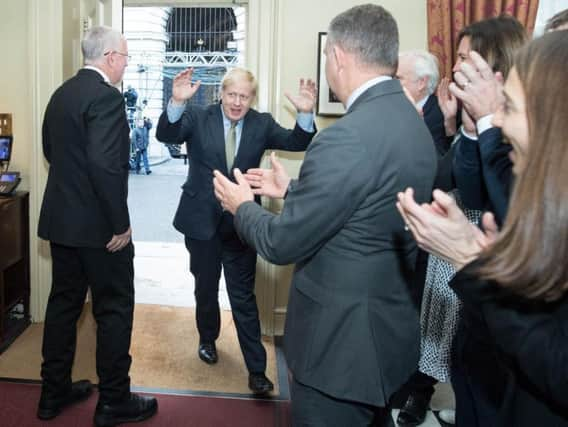How general election reinforced two great political divides: Leave-Remain and Scotland-England border – Professor John Curtice


The Prime Minister is hoping his victory in the election will enable him not only to deliver Brexit, but also to unite the country.
However, while the election delivered the Conservatives a substantial majority, including many a seat usually regarded as traditional Labour territory, the election reinforced two major divisions in Britain’s political landscape.
Advertisement
Hide AdAdvertisement
Hide AdThe first is the chasm between Remainers and Leavers. While Leave voters warmed to Mr Johnson’s message that it was time "to get Brexit done", Remain supporters were much less keen on the idea.
According to the final opinion polls, as many as 69 per cent of Leave voters backed the Conservatives, up nine points on two years ago, whereas, it won just 21 per cent of Remain voters did so, two points down on 2017.
Equally, while support for the Conservatives increased by six points on 2017 in those seats where more than 60 per cent voted for Leave in 2016, the party’s vote fell by three points where more than 55 per cent backed Remain.
Labour, in contrast, fell back much more in heavily pro-Leave areas than it did in predominantly Remain ones.
Foundations laid for constitutional clash
So, far from reflecting a new consensus about Brexit, the election witnessed an intensification of the political division between Remain and Leave Britain.
The second division exposed by the result is the gap between England & Wales on one hand and Scotland on the other.
Not only did the Conservative vote fall back in Scotland in contrast to most parts of England, but voters north of the Border voted heavily for a party that favours independence from the rest of the UK.
As a result, the foundations have been laid for a constitutional clash between a Scottish Government that wishes to hold another independence ballot and a UK Government that is adamant that such a ballot should not take place.
Advertisement
Hide AdAdvertisement
Hide AdWith approaching half of Scots now in favour of independence, the UK Government badly needs to woo public opinion north of the border, a task that will not be made easier by its commitment to leaving the EU that most in Scotland oppose.
The Conservative campaign in the election was pitched at securing the support of Leave voters south of the border. In that it was successful – but it also means there is a risk that the rest of the country will feel it has been left on the outside.
John Curtice is professor of politics at Strathclyde University and Research Fellow, ScotCen Social Research